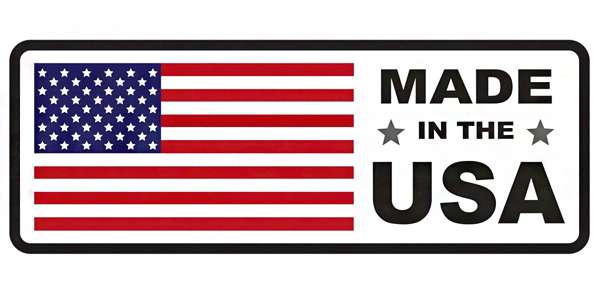How many times have we heard, “Why don’t they just build more 12 volt products in the US?”
The question is growing more urgent. Even the smaller amplifier/speaker suppliers are now paying $1 million or more in tariffs each year and the rise in shipping container costs is chopping another quarter of a million dollars from their bottom line (say, if you ship about 130 containers a year). The expenses are much greater for larger companies. These are hefty costs, especially if they continue year after year, and there are some industry experts who say the tariffs are here to stay.
A US factory might wipe out those costs, but is building a US factory feasible? And what if the tariffs and high shipping costs disappear in a year, leaving the investment unnecessary?
Blue salve partners has helped suppliers build factories in the past and says it’s possible to build a small factory in the US for a few million dollars with limited capacity as long as the goods command high price tags at retail. A small factory could even produce high end CarPlay radios that might produce a thousand or so a month, (again profitable only if they are very high end).
Larger volume factories, however, might cost $100 million or more when you consider buying land, erecting the building, outfitting the building and hiring labor.
There is the story of a Harman car audio factory built years back by founder Sidney Harman. He placed it close to the Mexican border so day-workers could cross over into the US to work. But Harman ran into problems due to a plastic knob, he told co-partner of blue salve, Robert Heiblim.
The knobs cost Harman 10 to 15 cents each to bring over to the US but factories in China could get hundreds of the knobs for 15 cents. It caused him to close the factory.
“In practical terms, this is part of the issue of the supply chain. Everybody wants to say ‘Why don’t you build in the US?’ In China, they often arrange factories one next to the other so you have an injection molding factory and tool making company right next to each other and they are next to an assembly factory that uses those plastic parts,” Heiblim said.

One reason that doesn’t exist in the US is because of ‘not-in-my-back-yard issues.’ Even though communities want jobs they don’t want noisy, odor-producing factories located nearby. Carmakers erect factories in out-of-the-way locations and they still suffer from finding parts overseas. It could take 10 to 20 years to rebuild a full supply chain of parts in the US, Heiblim said.
As for the costs of a small factory, Heiblim said used equipment such as parts insertion machines can be found for cents on the dollar. Some products can be built by hand with a conveyor belt and work stations built by a carpenter. “If you are building radios you need a Faraday box to test equipment. You can find that used. Old factories get rid of equipment for pennies on the dollar….”
There is the question of how long these tariffs and container prices will last. Maybe you build a factory and the tariffs disappear. Heiblim (as well as the CTA) say current politics would make that difficult since the Biden administration doesn’t want to appear soft on China relations. Heiblim believes the tariffs are here to stay.
As for container prices, there are only a handful of container companies and so they are able to charge a lot. So a drop to pre-pandemic pricing is unlikely, he added.
With a US factory you still pay tariffs on the parts, but they cost less than fully assembled products, so the tariffs are lower.
Blue salve suggests that companies go through the process of a cost analysis on producing in the US. It is also possible to build a factory in Cambodia or Vietnam.
He says, “There doesn’t appear to be any easy solution to China and the US [relations] at all right now and they may not be very good for a long time. So you may want to say it’s worth really doing some investigation about this. Whoever thinks the tariffs will go away; they are not going to go away. You can, as I have, go to the Administration…they may agree with me that it’s a tax on the US, but they don’t know how to get out of it anymore. The Biden Administration was not a pro tariff group of people but how do they cancel them without being accused of giving something away to China?”
Other car audio suppliers noted that even after building a US factory, you might be stuck with labor shortages and ever increasing labor prices.
Erik Harbour of PowerBass said, “If we’re able to source all raw materials and parts in the US and pay the employees an appropriate amount of money to do the work, and the employees are willing to work around the clock when necessary to get a job out and the American public is ready and willing to pay a higher premium on those goods and stop the race to zero on everything—until that happens, American Made and American sourced won’t work.”








Like everything… it seemed like a good idea at the time.
The problem with Manufacturing in many South American Countries is corruption.
I think America have made China Great again we are importing way too much. If the the cost of building the products is high here then start thinking of building it in South America.
The shipping time will get cut in half and no worries on tariff but we have to train the people there. This is going to take few years to do it but getting mfg out of China should be American Security issue .
God Bless America
[email protected] American Bass
I understand the tariffs for the most part. What is still not clear is the loose parts for a subwoofer are charged 25% tariffs and the entire subwoofer assembled and boxed only pay 7.1%. There is absolutely no push to build it here based on the current structure. IMO, somewhere the numbers got reversed. Should be higher on the finished sub and lower on the parts. Or…..India and Vietnam are gradually stepping up to fill some voids. These are “friendly” countries with no or minimal tariffs.
We sold American made Motorola Car Stereo Products years ago and the American Flag placed on every box was a great sales tool. MADE IN THE USA!
This article surely makes you think.
While our leadership is focusing on attacking other countries and wasting our tax money, China was invading us economically and destroying our infrastructure, now we are paying the price.
How hard it is to design and manufacture anything in the USA? It’s not hard at all. I hope this is a wakeup call.
We walked willingly to China. We searched them out for cheap labor, just as we still do in other countries. Quit trying to make China the boogyman. We did this to ourselves.